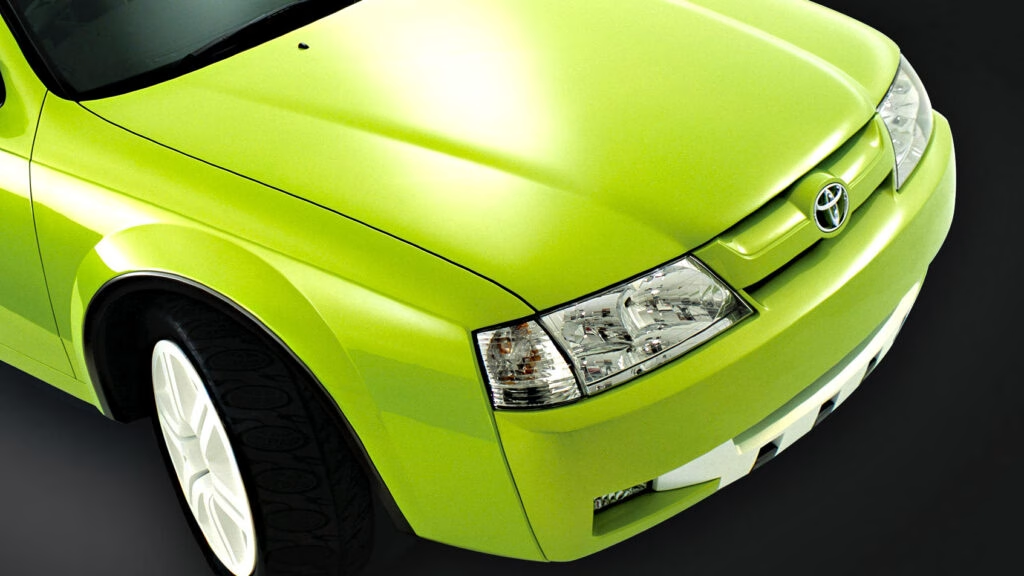What if your dad’s sensible sedan suddenly showed up with a lift kit and a tray in the back? Back in 2003, Toyota Australia toyed with a quirky idea: transforming the Avalon sedan into a rugged, all-wheel-drive pickup truck. This concept, known as the Toyota X-Runner, was an intriguing blend of sedan comfort and utility, designed to appeal to adventurous drivers who wanted a little more from their vehicles.
The X-Runner was no mere sketch on a designer’s table; it made a splash at the Melbourne and Sydney Motor Shows, showcasing Toyota’s local engineering prowess. The goal? To compete with homegrown rivals like the Ford Falcon Ute and the Holden Ute, which were already popular in Australia. It was a bold move, and while it might sound odd today, the concept had some serious potential.
### How Did They Transform a Sedan into a Pickup?
The transformation from a traditional sedan to a two-door utility was nothing short of dramatic. Toyota stretched the Avalon’s wheelbase by about 5.9 inches, creating more room for cargo. The sedan’s sleek lines morphed into a rugged utility body, complete with widened fenders and striking 19-inch white wheels. Custom bumpers and integrated skid plates added to the off-road aesthetic, making it clear that this was no ordinary car.
Inside, the X-Runner was decked out with what could only be described as early-2000s lifestyle excess. Picture this: a 17-inch plasma screen with GPS, a mini fridge, and sport seats borrowed from the Toyota Supra. It was a blend of practicality and luxury that reflected the adventurous spirit of the time.
### What Made the X-Runner Stand Out?
One of the standout features of the X-Runner was its lifted suspension, which increased ground clearance to 8.3 inches. Most of the suspension components were sourced from the Lexus RX SUV, while the rear axle came from the Toyota Tarago light commercial van. This clever engineering not only enhanced the vehicle’s off-road capabilities but also addressed packaging challenges, giving the X-Runner an edge over typical car-derived utes.
Adding to its appeal was the all-wheel-drive system, also borrowed from the RX. This feature provided better traction compared to the rear-wheel-drive setups of its competitors, making it a more versatile option for those who needed to navigate various terrains.
### Power Under the Hood
Under the hood, the X-Runner was equipped with a supercharged version of Toyota’s 3.0-liter V6 engine, paired with a four-speed automatic transmission. Thanks to the TRD supercharger, power jumped to 248 hp, with torque reaching 330 Nm. This was a significant upgrade from the naturally aspirated Avalon engine, which produced 200 hp and 290 Nm. The added power made the X-Runner not just a pretty face but a capable performer on the road.
### Why Did It Never Hit the Market?
Despite the excitement surrounding the X-Runner, it never made it past the concept stage. The market appeal was likely too limited, given its Australia-specific design and the fact that the Avalon was nearing the end of its local production run. By 2006, the Avalon was replaced by the Toyota Aurion, leaving the X-Runner as a quirky footnote in automotive history—a testament to a time when manufacturers dared to experiment with unconventional ideas.
### The Legacy of the Avalon
While the Avalon nameplate may have faded from the Australian market, it continued to exist in other regions. The fifth-generation Avalon was introduced in 2018 and, although it was discontinued in the U.S. after the 2022 model year, it remains available in China, where it has received updates in 2022 and 2024.
The big takeaway? The X-Runner isn’t just a forgotten concept; it represents a moment in automotive history when innovation and creativity were celebrated. While it may not have hit the production line, it serves as a reminder that sometimes, the most outlandish ideas can lead to exciting discussions about what vehicles could be. If you’re feeling adventurous, why not take a cue from the X-Runner and think outside the box for your next vehicle choice?

